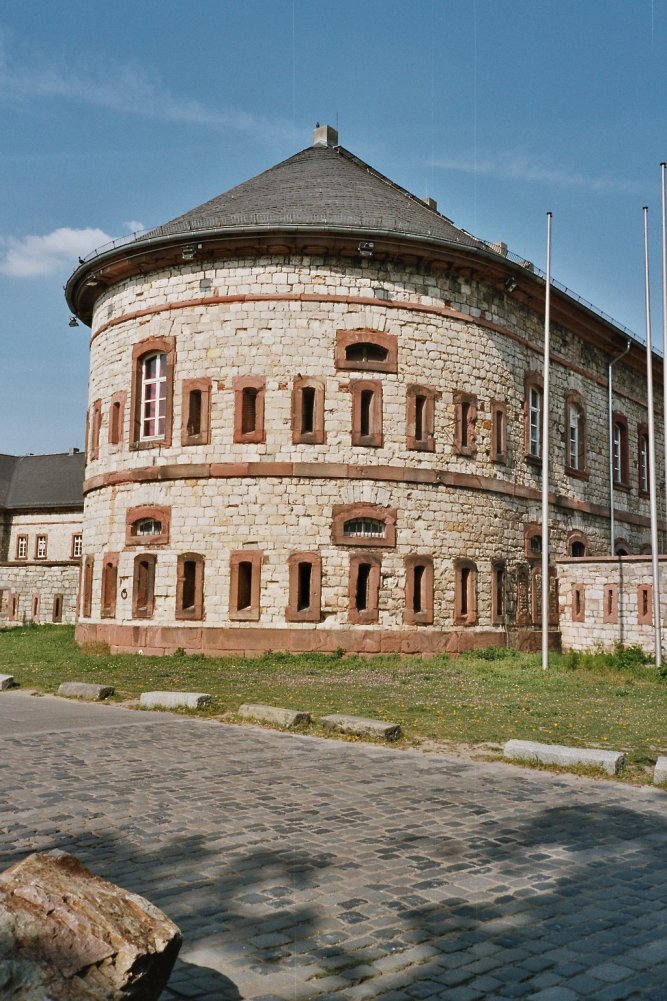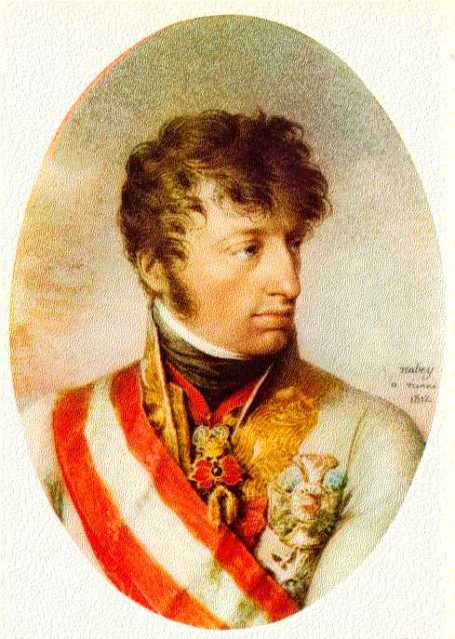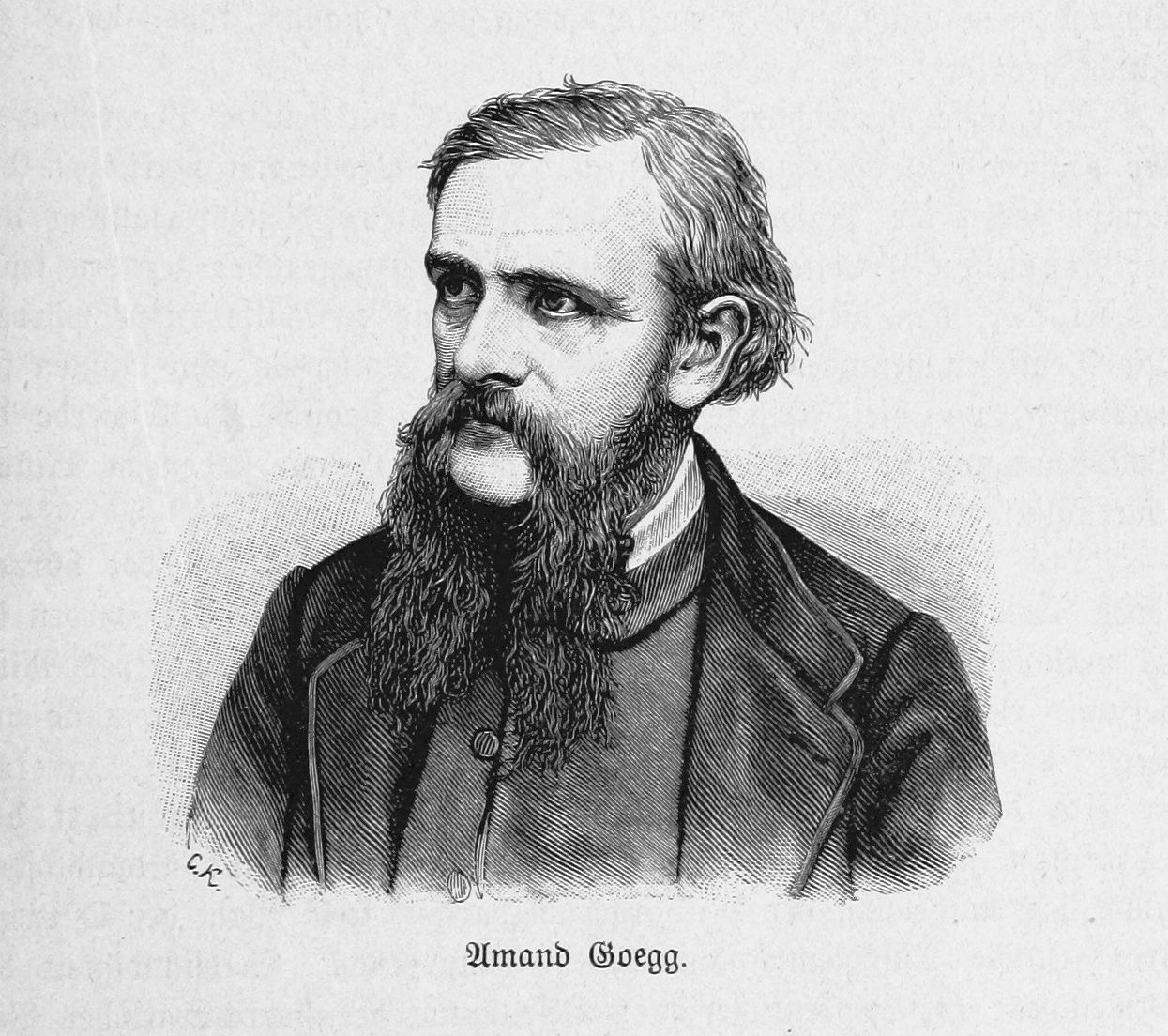|
Battle Of Rastadt
The Battle of Rastatt (5 July 1796) saw part of a Republican French army under Jean Victor Marie Moreau clash with elements of the Habsburg army under Maximilian Anton Karl, Count Baillet de Latour which were defending the line of the Murg River. Leading a wing of Moreau's army, Louis Desaix attacked the Austrians and drove them back to the Alb River in the War of the First Coalition action. Rastatt is a city in the state of Baden-Württemberg in Germany, located south of Mannheim and west of Stuttgart. In the Rhine Campaign of 1796, Moreau's army made a successful assault crossing of the Rhine River at Kehl on 24 June. Moreau expanded his bridgehead, sending Desaix north, Laurent Gouvion Saint-Cyr east and Pierre Marie Barthélemy Ferino south. The French won a clash over Anton Sztáray at Renchen on the 28th before moving against Latour at Rastatt. Soon afterward, Archduke Charles, Duke of Teschen joined Latour with reinforcements from the north. The Battle of Ettlingen o ... [...More Info...] [...Related Items...] OR: [Wikipedia] [Google] [Baidu] |
French Revolutionary Wars
The French Revolutionary Wars () were a series of sweeping military conflicts resulting from the French Revolution that lasted from 1792 until 1802. They pitted French First Republic, France against Kingdom of Great Britain, Great Britain, Habsburg monarchy, Austria, Kingdom of Prussia, Prussia, Russian Empire, Russia, and several other countries. The wars are divided into two periods: the War of the First Coalition (1792–1797) and the War of the Second Coalition (1798–1802). Initially confined to Europe, the fighting gradually assumed a global dimension. After a decade of constant warfare and aggressive diplomacy, France had conquered territories in the Italian peninsula, the Low Countries, and the Rhineland with its very large and powerful military which had been totally mobilized for war against most of Europe with mass conscription of the vast French population. French success in these conflicts ensured military occupation and the spread of revolutionary principles over mu ... [...More Info...] [...Related Items...] OR: [Wikipedia] [Google] [Baidu] |
Kehl
Kehl (; ) is a city with around 38,000 inhabitants in the southwestern Germany, German state of Baden-Württemberg. It lies in the region of Baden on the Rhine River, at the confluence with the smaller Kinzig (Rhine), Kinzig River, directly opposite the French and Alsace, Alsatian city of Strasbourg. It is the third-largest city of the Ortenaukreis (''Ortenau District'') after Offenburg and Lahr/Schwarzwald. Kehl is mostly known because of its proximity to Strasbourg and as a border city. Strasbourg and Kehl are connected by four Rhine bridges which are from south to north: the ''Passerelle des Deux Rives'' (pedestrians and cyclists), the ''Bridge of Europe'' (motorists, pedestrians and cyclists), the ''Beatus-Rhenanus Bridge'' (tramway, pedestrians and cyclists), and the ''Rhine Bridge, Kehl, Rhine Bridge'' (railway). Line D of the Strasbourg tramway was extended in 2017 to reach Kehl station, and since 2018 there are another two stations within Kehl. It is therefore possible t ... [...More Info...] [...Related Items...] OR: [Wikipedia] [Google] [Baidu] |
Mainz
Mainz (; #Names and etymology, see below) is the capital and largest city of the German state of Rhineland-Palatinate, and with around 223,000 inhabitants, it is List of cities in Germany by population, Germany's 35th-largest city. It lies in the Frankfurt Rhine-Main, Rhine-Main Metropolitan Region—Germany's second-largest metropolitan region after Rhine-Ruhr—which also encompasses the cities of Frankfurt am Main, Wiesbaden, Darmstadt, Offenbach am Main, and Hanau. Mainz is located at the northern end of the Upper Rhine Plain, on the left bank of the Rhine. It is the largest city of Rhenish Hesse, a region of Rhineland-Palatinate that was historically part of Grand Duchy of Hesse, Hesse, and is Rheinhessen (wine region), one of Germany's most important wine regions because of its mild climate. Mainz is connected to Frankfurt am Main by the Rhine-Main S-Bahn rapid transit system. Before 1945, Mainz had six boroughs on the other side of the Rhine (see: :de:Rechtsrheinische St ... [...More Info...] [...Related Items...] OR: [Wikipedia] [Google] [Baidu] |
Main (river)
The Main () is the longest tributary of the Rhine, one of the major List of rivers of Europe, European rivers. It rises as the White Main in the Fichtel Mountains of northeastern Bavaria and flows west through central Germany for to meet the Rhine below Rüsselsheim, Hesse. The cities of Mainz and Wiesbaden are close to the confluence. The largest cities on the Main are Frankfurt am Main, Offenbach am Main and Würzburg. It is the longest river lying entirely in Germany (if the Weser-Werra are considered separate). Geography The Main flows through the north and north-west of the States of Germany, state of Bavaria and then across southern Hesse; against the latter it demarcates a third state, Baden-Württemberg, east and west of Wertheim am Main, the northernmost town of that state. The upper end of its drainage basin, basin opposes that of the Danube where the watershed is recognised by natural biologists, sea salinity studies (and hydrology science more broadly) as the Eu ... [...More Info...] [...Related Items...] OR: [Wikipedia] [Google] [Baidu] |
Düsseldorf
Düsseldorf is the capital city of North Rhine-Westphalia, the most populous state of Germany. It is the second-largest city in the state after Cologne and the List of cities in Germany with more than 100,000 inhabitants, seventh-largest city in Germany, with a 2022 population of 629,047. The Düssel, from which the city and the borough of Düsseltal take their name, divides into four separate branches within the city, each with its own mouth into the Rhine (Lower Rhine). Most of Düsseldorf lies on the right bank of the Rhine, and the city has grown together with Neuss, Ratingen, Meerbusch, Erkrath and Monheim am Rhein. Düsseldorf is the central city of the metropolitan region Rhine-Ruhr, the List of EU metropolitan regions by GDP#2021 ranking of top four German metropolitan regions, second biggest metropolitan region by GDP in the European Union, that stretches from Bonn via Cologne and Düsseldorf to the Ruhr (from Duisburg via Essen to Dortmund). The ''-dorf'' suffix mea ... [...More Info...] [...Related Items...] OR: [Wikipedia] [Google] [Baidu] |
Dagobert Sigmund Von Wurmser
Dagobert Sigmund, Count von Wurmser (7 May 1724 – 22 August 1797) was an Austrian field marshal during the French Revolutionary Wars. Although he fought in the Seven Years' War, the War of the Bavarian Succession, and mounted several successful campaigns in the Rhineland in the initial years of the French Revolutionary Wars, he is probably most remembered for his unsuccessful operations against Napoleon Bonaparte during the 1796 campaign in Italy. Although initially in the Army of France during the Seven Years' War, Wurmser left France after Louis reached a peace agreement with Britain, and joined the military of the House of Habsburg. He later took part in the short-lived War of the Bavarian Succession, also called the so-called ''Kartoffelkrieg'' (Potato War). During the French Revolutionary Wars, Wurmser commanded several imperial Habsburg armies on in the Rhine River valley between 1793 and 1795, and perhaps his most conspicuous achievement was the taking of the lines ... [...More Info...] [...Related Items...] OR: [Wikipedia] [Google] [Baidu] |
Jean-Baptiste Jourdan
Jean-Baptiste Jourdan, 1st Count Jourdan (; 29 April 1762 – 23 November 1833), was a French military commander who served during the French Revolutionary Wars and the Napoleonic Wars. He was made a Marshal of the Empire by Emperor Napoleon I in 1804. He was also a Jacobin politician during the Directory phase of the French Revolution, serving as member of the Council of Five Hundred between 1797 and 1799. One of the most successful commanders of the French Revolutionary Army, Jourdan is best remembered in the Revolution for leading the French to a decisive victory over the First Coalition at the Battle of Fleurus, during the Flanders campaign. Under the Empire he was rewarded by Napoleon with the title of Marshal and continued to hold military assignments, but suffered a major defeat at the Battle of Vitoria, which resulted in the Empire's permanent loss of Spain. In 1815 he became reconciled with the Bourbon Restoration, and later supported the July Revolution and served ... [...More Info...] [...Related Items...] OR: [Wikipedia] [Google] [Baidu] |
Fortress Of Mainz
The Fortress of Mainz was a fortressed garrison town between 1620 and 1918. At the end of the Napoleonic Wars, under the term of the 1815 Peace of Paris, the control of Mainz passed to the German Confederation and became part of a chain of strategic fortresses which protected the Confederation. With the dissolution of the Confederation and the Austro-Prussian War, control of the fortress first passed to Prussia, and, after the 1871 Unification of Germany, to the German Empire. 1839 In 1839 an article on Mainz in '' The Penny Cyclopædia'' stated that Mainz was one of the strongest fortresses in Europe, and a chief bulwark of Germany against France. At the Congress of Vienna, Mainz was assigned to the Louis, Grand-Duke of Hesse-Darmstadt, but it was decided that, as a fortress, it should belong to the German Confederation, with a garrison of Austrian, Prussian, and Hessian troops. This garrison in time of peace consisted of 6,000 men. The military governor, who retained his pos ... [...More Info...] [...Related Items...] OR: [Wikipedia] [Google] [Baidu] |
François Sébastien Charles Joseph De Croix, Count Of Clerfayt
François Sébastien Charles Joseph de Croix, Count of Clerfayt (; 14 October 1733 – 21 July 1798),His title is also spelled Count of Clairfayt and Count of Clairfait a Walloon, joined the army of the Habsburg monarchy and soon fought in the Seven Years' War. Later in his military career, he led Austrian troops in the war against Ottoman Turkey. During the French Revolutionary Wars he saw extensive fighting and rose to the rank of Field Marshal. Early career In the Seven Years' War (1756–1763) he distinguished himself, earning rapid promotion, and received the Military Order of Maria Theresa decoration. At the conclusion of the peace ( Treaty of Hubertusburg, 15 February 1763), though still under thirty, he had already become an Oberst (colonel). During the revolt in the Netherlands in 1787, Clerfayt, as a Walloon by birth, came under great pressure to abandon Emperor Joseph II. But he resisted all overtures, and in the following year went to fight in the Austro-Turkish Wa ... [...More Info...] [...Related Items...] OR: [Wikipedia] [Google] [Baidu] |
Battle Of Ettlingen
The Battle of Ettlingen or Battle of Malsch (9 July 1796) was fought during the French Revolutionary Wars between the armies of the First French Republic and Habsburg Austria near the town of Malsch, southwest of Ettlingen. The Austrians under Archduke Charles, Duke of Teschen tried to halt the northward advance of Jean Victor Marie Moreau's French '' Army of Rhin-et-Moselle'' along the east bank of the Rhine River. After a tough fight, the Austrian commander found that his left flank was turned. He conceded victory to the French and retreated east toward Stuttgart. Ettlingen is located south of Karlsruhe. The Rhine Campaign of 1796 saw Moreau's army facing the Austrian ''Army of the Upper Rhine'' under Maximilian Anton Karl, Count Baillet de Latour in the south. Meanwhile, Jean-Baptiste Jourdan's French ''Army of Sambre-et-Meuse'' opposed the ''Army of the Lower Rhine'' under Archduke Charles in the north. Jourdan drubbed Duke Ferdinand Frederick Augustus of Württemberg at ... [...More Info...] [...Related Items...] OR: [Wikipedia] [Google] [Baidu] |
Archduke Charles, Duke Of Teschen
Archduke Charles Louis John Joseph Lawrence of Austria, Duke of Teschen (; 5 September 177130 April 1847) was an Austrian field marshal, the third son of Emperor Leopold II and his wife, Maria Luisa of Spain. He was also the younger brother of Francis II, Holy Roman Emperor. He was epileptic, but achieved respect both as a commander and as a reformer of the Austrian army. He was considered one of Napoleon's most formidable opponents and one of the greatest generals of the French Revolutionary and Napoleonic Wars. He began his career fighting the revolutionary armies of France. Early in the wars of the First Coalition, he saw victory at Neerwinden in 1793, before being defeated at Wattignies in 1793 and Fleurus in 1794. In 1796, as chief of all Austrian forces on the Rhine, Charles defeated Jean-Baptiste Jourdan at Amberg, Würzburg and Limburg, and then won victories at Wetzlar, Emmendingen and Schliengen that forced Jean Victor Marie Moreau to withdraw across the Rhine ... [...More Info...] [...Related Items...] OR: [Wikipedia] [Google] [Baidu] |
Renchen
Renchen () is a small city in Baden-Württemberg, Germany, part of the district of Ortenau. Geography Renchen is located in the foothills of the northern Black Forest at the entrance to the Rench valley at the edge of the Upper Rhine River Plains. Neighboring communities The city shares borders with the following cities and towns, listed clock-wise from the north: Achern, Kappelrodeck, Oberkirch, Appenweier, and Rheinau. Boroughs In addition to Renchen (proper) the city includes the boroughs of Erlach and Ulm zu Renchen. History Renchen was first in official documents in 1115. In 1326 it received a town charter but the town lost it again as well as all significance when it was destroyed during the Thirty Years' War. In 1838 the Grand Duke of Baden again granted a town charter to Renchen but it again lost the right to call itself a town as a result of the German district reform in 1935. Renchen then received a town charter for the third time in 1950 in recognition of its hist ... [...More Info...] [...Related Items...] OR: [Wikipedia] [Google] [Baidu] |








